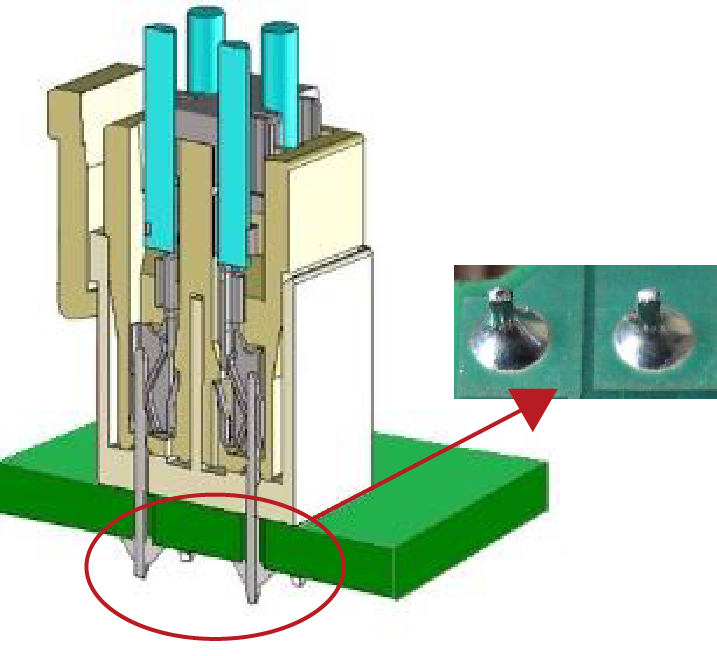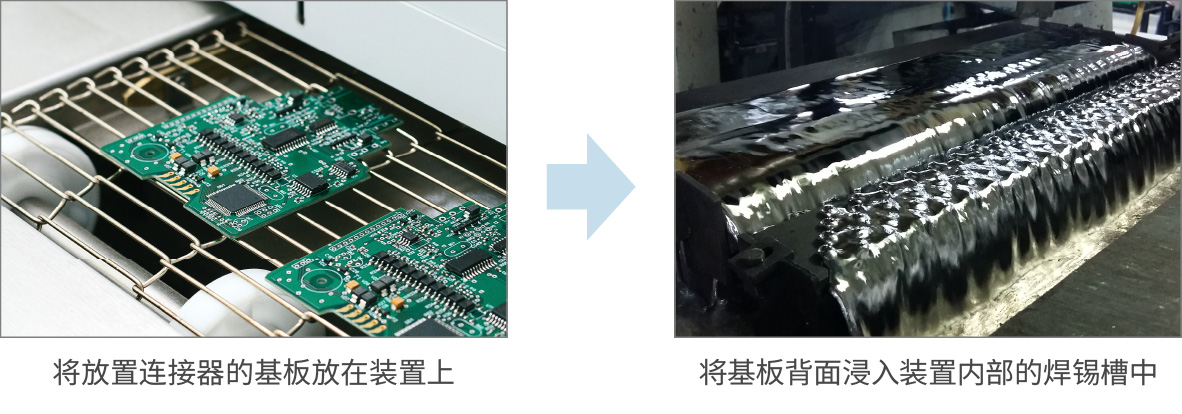The key point of connector connection: base plate installation
Mehoo electronics
From the question of what is a connector and what a connector is for, to the more professional knowledge of the use and installation of connector products, Hirose Electric, as a long-established professional connector manufacturer, will serialize this topic for you. For the "Basic Guide To Connectors You Need To Know!" series.
The third part is about the connection between the second substrate and the connector of the three key points of connection for the correct transmission of power. With the title of "Key points of connector connection: substrate mounting. There are two main methods of substrate mounting, DIP welding and SMT welding", let's take a look at their differences and characteristics.
DIP Soldering (Dip Soldering)
DIP soldering (dip soldering) is a method of inserting terminals into holes (through holes) on the substrate and dipping them into molten solder from the back side for packaging. In daily life, people "dip" vegetables in sauces, and it is said that the word is derived from here.
This DIP soldering is suitable for single-sided/double-sided and multi-layered substrates, and is widely used due to its high versatility.
Insert the terminals into the holes on the board and solder them from the back.
The characteristics of DIP welding are as follows:
・The connection area between the board and the connector is large, and the bonding strength is increased.
・Various parts of different sizes can be mounted at the same time.
・Since it is difficult to adjust the amount of solder, the terminals that are close to each other are connected with each other with solder, and short circuits (solder bridges) are likely to occur.
・Through holes occupy both sides of the substrate.

SMT soldering (reflow soldering, surface mount)
SMT soldering (reflow soldering, surface mount) is a mounting method in which solder paste is applied to a circuit board and heated with a reflow device to melt the solder.
The connector must maintain the terminal flatness (flatness) before heating and during the heating of the reflow device until it cools and solidifies after heating. If the terminal flatness cannot be maintained until the solder solidifies, the solder will be left in an unattained state.
The connection area with the substrate is narrower than DIP soldering, and it is suitable for fine mounting of small parts. From this point of view, almost all mobile devices such as smartphones use this installation method.
The characteristics of SMT welding are as follows:
・Only the front side of the board is fixed, and the back side can be used effectively.
・Weld bridges are less likely to occur and are suitable for narrow-pitch parts. Standard installation method for mobile devices.
・Since only the surface is fixed, the fixing force is weaker than dip soldering.















